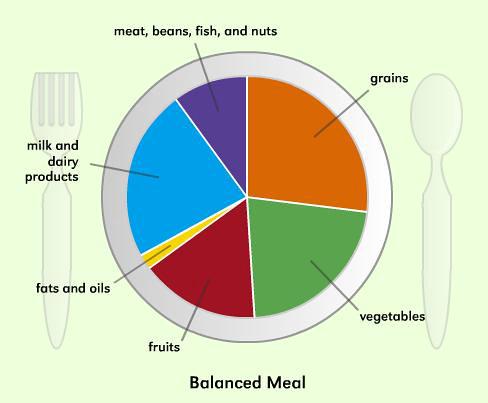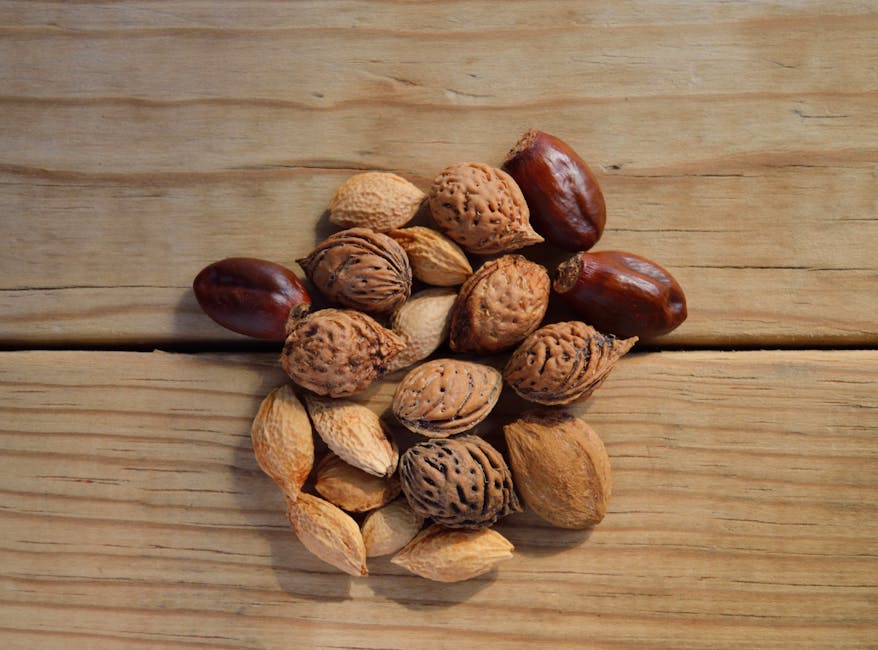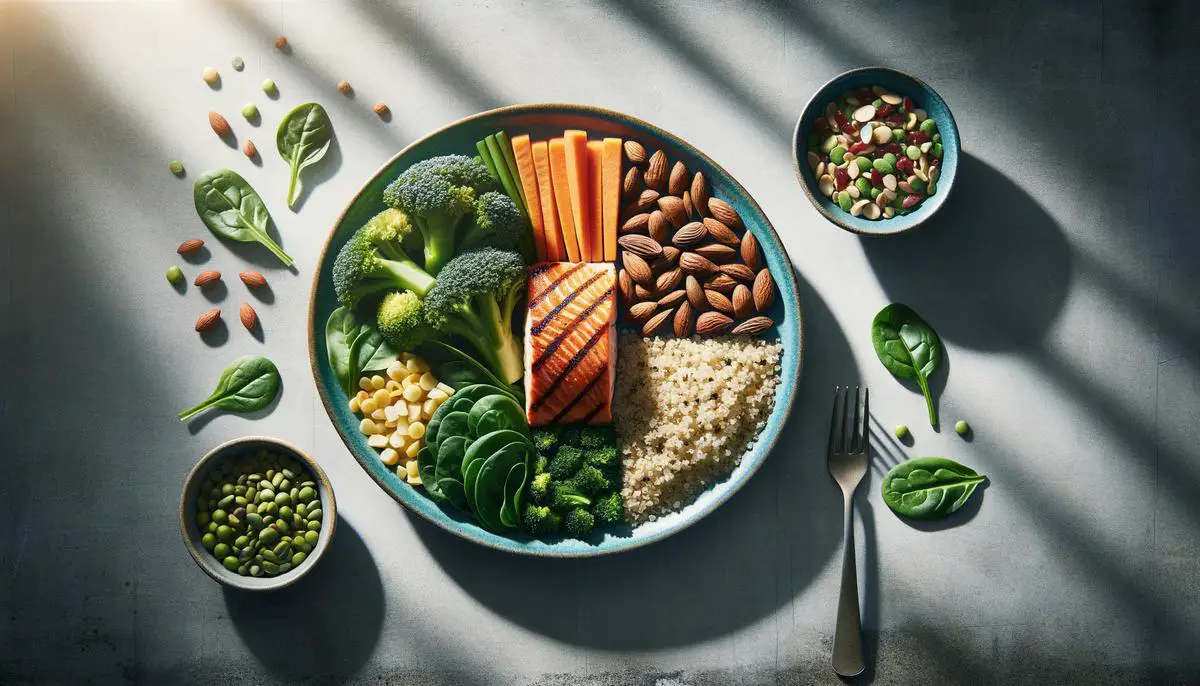Embarking on a healthier lifestyle often begins with what we choose to put on our plates. Making small, mindful adjustments to our daily eating habits can lead to a more vibrant, energetic self. From fiber-rich fruits and vegetables that keep us feeling fuller for longer, to portion sizes that help us enjoy meals without overindulgence, and healthy fats that provide essential nutrients—each choice plays a role in shaping our overall health.
Incorporating More Fiber
Incorporating more fiber into your diet is an effective strategy for reducing belly fat. High-fiber foods, like whole grains, fruits, and vegetables, offer many benefits, especially when it comes to tackling visceral fat. This type of fat, located deep within the abdomen, poses health risks, but fiber helps counteract these dangers.
Fiber's effectiveness lies in its ability to promote satiety, helping you feel full longer. By incorporating foods rich in soluble and insoluble fiber, you naturally decrease your calorie intake without feeling deprived. Fiber swells in the stomach, taking up space and slowing down digestion, making you less likely to reach for unhealthy snacks or large portions.
Whole grains are an excellent source of fiber. Swapping out refined grains like white bread for whole-grain alternatives can significantly increase your daily fiber intake. Quinoa, brown rice, and whole wheat bread are great staples to include in your diet. These foods offer essential nutrients and play a crucial role in reducing the absorption of belly fat.
Vegetables and fruits further amplify the belly-fat fighting power of your diet. Fibrous veggies such as broccoli, spinach, and carrots bulk up your meals with low calories and provide a rich spectrum of vitamins and antioxidants. Fruits like apples, berries, and oranges are loaded with fiber and natural sweetness to satisfy sugar cravings in a healthy way.
This approach encourages the intake of naturally nutrient-rich foods. Integrating more fiber into your meals is simple and doesn't require a complete overhaul, just mindful additions and substitutions. The variety available means you can enjoy a plethora of flavors and textures while making a positive impact on your health.
By consciously choosing fiber-rich foods, you set the stage for more effective belly fat loss, improved gut health, and reduced risk of chronic diseases. It's about making space on your plate for what truly benefits your body, tackling belly fat at its source, and paving the way to a healthier, more vibrant you.
Managing Portion Sizes
Portion control is like unlocking a pathway to maintaining a calorie deficit without feeling like you're missing out. The key is understanding the right serving sizes for different foods, preventing overeating while still allowing room for satisfaction and enjoyment in your meals.
Here's a guide to portion sizes:
- Half of your plate should be filled with vegetables
- A quarter with lean protein (think the size of a deck of cards)
- The remaining quarter with whole grains or starches about the size of your fist
Visual cues can be your allies in portion control. For instance, a tennis ball is about one serving of fruit, while a computer mouse is akin to a small baked potato. These cues make it easier to keep track without always reaching for a measuring cup.
Mindful eating can significantly enhance portion control. It takes about 20 minutes for your brain to register fullness, so taking time to savor each bite allows you to enjoy your food more and recognize when you're satisfied.
When it comes to snacks, portion sizes still matter. Pre-packaging snacks or using small plates can prevent mindless overeating. Opt for nutrient-dense options like nuts and seeds, but remember, a handful is often enough.
Adapting portion sizes doesn't mean you have to say goodbye to your favorite treats. It's about balance. Enjoy that slice of cake or piece of pizza, but do so in moderation.
Staying hydrated is also important. Sometimes we confuse thirst with hunger. Drinking a glass of water before diving into your meal not only helps in staying hydrated but might also prevent overeating by partially filling your stomach.
Flexibility is key to sustainable portion control. When eating out with friends, try sharing dishes or opting for healthier choices. Remember, consistency over perfection leads to lifelong habits.
Portion control marries mindfulness with satisfaction, proving that you can have your cake (in appropriate servings!) and eat it too. As you master portion sizes, you'll find yourself savoring each bite, celebrating both the flavor and the joy of eating well for your health.

Choosing Healthy Fats
Choosing healthy fats is a lifestyle choice that can steer your health in a positive direction. When we talk about fats, not all are created equal. Monounsaturated and polyunsaturated fats offer a goldmine of health benefits. These fats are essential to our diet, fueling our body with energy and aiding in the absorption of vital vitamins.
Fatty fish like salmon, trout, and herring are packed with omega-3 fatty acids. Omega-3s are known for their heart health benefits and role in reducing visceral fat – the belly fat that's harder to lose and potentially more harmful than other fat types. Including a couple of servings of fatty fish per week can boost your heart health1.
If you're not a fan of fish, nuts and seeds are great alternatives. Almonds, walnuts, flaxseeds, and chia seeds are fantastic sources of both monounsaturated and polyunsaturated fats. These little powerhouses are fiber-rich and pack a nutritional punch with antioxidants. Adding a handful to your diet can add crunch and flavor while helping chip away at visceral fat.
Plant oils like olive oil, sunflower oil, and canola oil are also valuable sources of healthy fats. Drizzling some olive oil on your salad brings monounsaturated fats, aiding in weight management and improving insulin sensitivity. Remember, moderation is key as fats are still calorie-dense.
Making these fats part of your daily diet doesn't have to be complicated. Switch up cooking oils for healthier versions, snack on nuts instead of chips, and aim to include fish in your meal plan a couple of times a week. Small shifts in your diet can lead to big health gains.
Incorporating healthier fats into your diet doesn't mean skimping on flavor. It's an opportunity to explore new foods and recipes that tantalize your taste buds while doing your body good. Revel in the variety, enjoy your food, and love the journey towards a healthier you.

The most impactful step we can take towards improving our health and well-being lies in the everyday choices we make about what to eat. By focusing on incorporating more fiber into our diets, managing portion sizes wisely, and choosing healthy fats, we pave a path towards reducing belly fat and enhancing our quality of life. These simple shifts in how we view and consume food can lead us to a healthier version of ourselves.
Revolutionize your content with Writio, the AI content creator! This article was written by Writio.
- Albracht-Schulte K, Kalupahana NS, Ramalingam L, Wang S, Rahman SM, Robert-McComb J, Moustaid-Moussa N. Omega-3 fatty acids in obesity and metabolic syndrome: a mechanistic update. J Nutr Biochem. 2018;58:1-16. doi:10.1016/j.jnutbio.2018.02.012
Thank you for reading this post, don't forget to subscribe to our free newsletter
!
